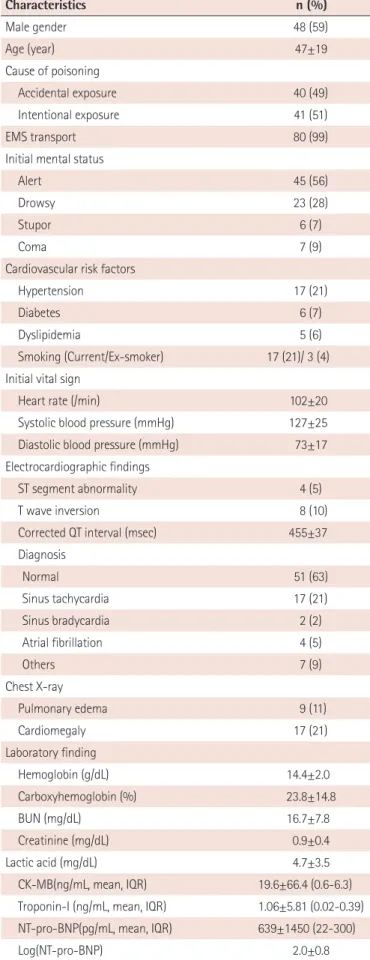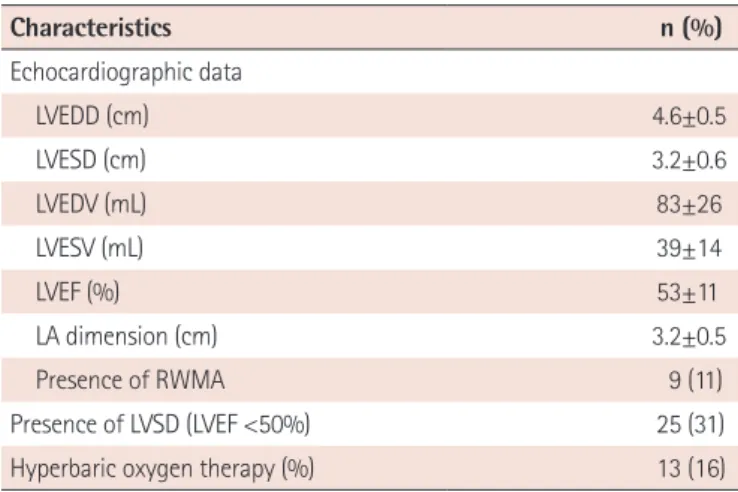Korean Circulation Journal
Print ISSN 1738-5520 • On-line ISSN 1738-5555
Introduction
Carbon monoxide (CO) is one of the most well-known toxic air pollutants. It is produced by the incomplete combustion of carbonaceous substances.
1)2)Exposure to high levels of CO may induce tissue hypoxia, cause tissue injury and even death. Cardiac toxicity after CO poisoning includes arrhythmias, heart failure and myocardial infarction.
3-6)As these cardiac injuries may increase mortality in patients with CO intoxication, it is very important to detect cardiac injuries at the emergency department (ED). However, the prevalence and clinical course in patients with CO intoxication has been insufficiently reported. Also, there is no study in the literature describing the prediction of cardiac toxicity in patients
Incidence and Clinical Course of Left Ventricular Systolic Dysfunction in Patients with Carbon Monoxide Poisoning
Jae-Hwan Lee, MD 1 , Hyun-Sook Kim, MD 2 , Jae-Hyeong Park, MD 1 , Min Su Kim, MD 1 , Byung Joo Sun, MD 1 , Seung Ryu, MD 3 , Song Soo Kim, MD 4 , Seon Ah Jin, MD 1 , Jun Hyung Kim, MD 1 , Si Wan Choi, MD 1 , Jin-Ok Jeong, MD 1 , In-Sun Kwon, PhD 5 , and In-Whan Seong, MD 1
1
Department of Cardiology in Internal Medicine, Chungnam National University Hospital, Chungnam National University School of Medicine, Daejeon,
2Cardiovascular Center in Hallym University Sacred Heart Hospital, Anyang,
3Department of Emergency Medicine, Chungnam National University Hospital, Chungnam National University School of Medicine, Daejeon,
4Department of Diagnostic Imaging, Chungnam National University Hospital, Chungnam National University School of Medicine, Daejeon,
5


